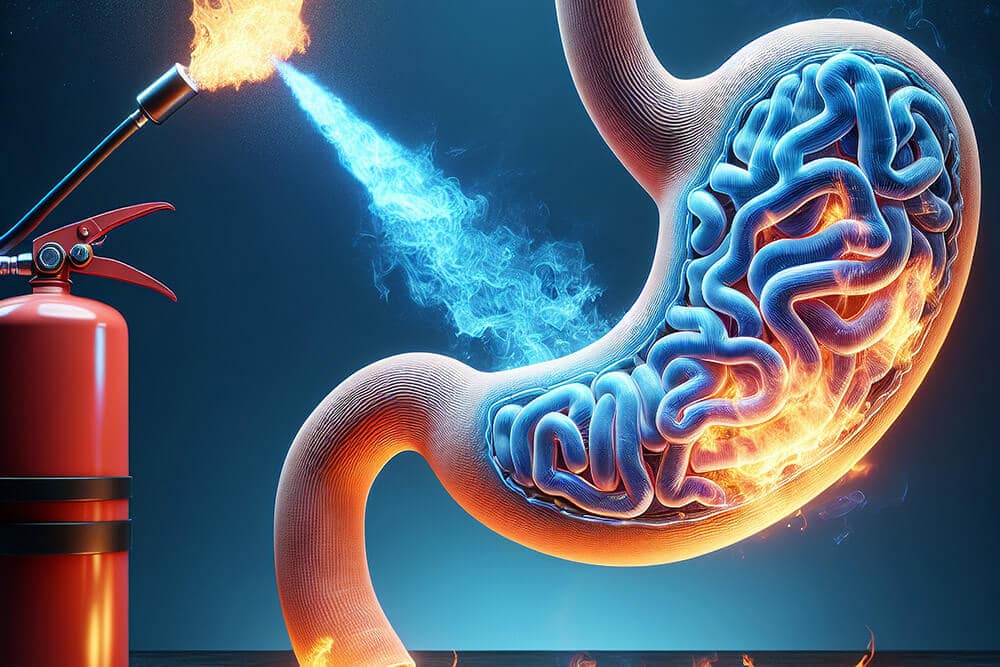What Is Pancreatic Divisum?
Pancreatic divisum is a congenital condition in which the two main ducts of the pancreas fail to fuse. Instead of draining together, they remain separate, which can obstruct enzyme flow into the small intestine. While it isn-t cancerous, divisum can trigger pain or recurrent pancreatitis (inflammation of the pancreas).
Common Causes and Risk Factors
- Present from birth (a congenital anomaly)
- Family history of pancreatic disorders
- Heavy alcohol use or chronic smoking (can worsen symptoms)
- Other structural pancreatic abnormalities
Signs and Symptoms
- Upper abdominal pain, especially after meals
- Repeated attacks of acute pancreatitis
- Nausea and vomiting during flare-ups
- Steatorrhea (pale, greasy, or fatty stools)
- Unexplained weight loss and malabsorption
How Dr. Rishi Chadha Diagnoses Pancreatic Divisum?
1. Medical History & Physical Exam
Dr. Chadha begins by reviewing your personal and family history of pancreatic issues, alcohol and smoking habits, and assessing abdominal tenderness or other physical signs.
2. Non-Invasive Imaging (MRCP)
Magnetic Resonance Cholangiopancreatography (MRCP) provides a clear map of the pancreatic ducts to spot any separation or blockage without radiation.
3. Endoscopic Ultrasound or ERCP
For detailed views, Dr. Chadha may perform an endoscopic ultrasound or ERCP (endoscopic retrograde cholangiopancreatography) to confirm divisum and evaluate enzyme flow through the minor papilla.
4. ICD-10 Coding & Documentation
Once confirmed, the diagnosis is coded-most often Q45.8 (pancreatic divisum) or K86.1 if there are associated pancreatitis complications-to guide an individualized treatment plan.
Frequently Asked Questions
What is pancreatic divisum?
It's a congenital condition where the two main pancreatic ducts fail to fuse, which can block enzyme flow and lead to pain or pancreatitis.
What code is used for this?
The primary ICD-10 code is Q45.8. If complications like chronic pancreatitis develop, K86.1 may also be used.
Is it cancer?
No. Pancreatic divisum is not cancer, but it can cause recurrent inflammation, pain, and digestive issues.
How is it found?
Through imaging tests such as MRCP (magnetic resonance cholangiopancreatography), endoscopic ultrasound, or ERCP (endoscopic retrograde cholangiopancreatography).
What are the main symptoms?
Common symptoms include upper abdominal pain after meals, repeated pancreatitis attacks, nausea, fatty (pale or greasy) stools, and unintended weight loss.
Can I treat it with diet?
A low-fat diet can ease symptoms, but many patients also need medical therapies or endoscopic procedures for lasting relief.
What's the recovery time after treatment?
Most patients experience significant improvement within a few days of endoscopic procedures like sphincterotomy or stent placement, though full recovery may vary.
Is it genetic?
Pancreatic divisum is a congenital (present at birth) ductal anomaly. A family history of pancreatic issues may increase risk, but it's not directly inherited.
Do I need enzyme pills?
If your pancreas isn-t producing enough digestive enzymes, Dr. Chadha will prescribe enzyme replacement therapy to improve nutrient absorption and reduce symptoms.
How do I get started?
Call GastroDoxs in Houston or book online to schedule a consultation with Dr. Rishi Chadha and develop a personalized treatment plan.











